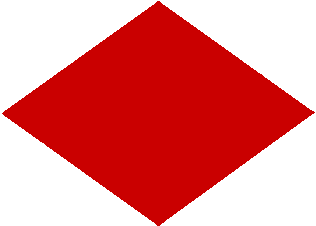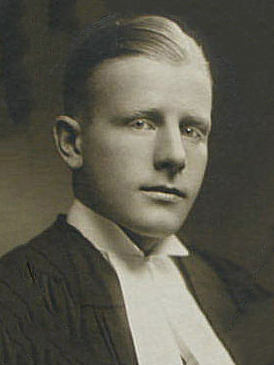Related Research Articles

The Royal Canadian Army Medical Corps (RCAMC) was an administrative corps of the Canadian Army.

I Canadian Corps was one of the two corps fielded by the Canadian Army during the Second World War.

Brigadier General Douglas Gordon Cunningham, was a Canadian lawyer and soldier.
The Surgeon General is the professional head of the Canadian military health jurisdiction, the adviser to the Minister of National Defence and the Chief of Defence Staff on all matters related to health, and head of the Royal Canadian Medical Service. The Surgeon General may also be appointed the commander of the Canadian Forces Health Services Group, which fulfils all military health system functions from education and clinical services to research and public health. It consists of the Royal Canadian Medical Service, the Royal Canadian Dental Corps, personnel from other branches of the armed forces, and civilians, with health professionals from over 45 occupations and specialties in over 125 units and detachments across Canada and abroad. When appointed Director General Health Services, the Surgeon General is also the senior health services staff officer in the Department of National Defence. The Surgeon General is normally appointed to the Medical Household as Honorary Physician (KHP) or Honorary Surgeon (KHS) to His Majesty the King.
The New Year Honours 1973 were appointments in many of the Commonwealth realms of Queen Elizabeth II to various orders and honours to reward and highlight good works by citizens of those countries. They were announced on 1 January 1973 to celebrate the year passed and mark the beginning of 1973.
The New Year Honours 1974 were appointments in many of the Commonwealth realms of Queen Elizabeth II to various orders and honours to reward and highlight good works by citizens of those countries. They were announced on 1 January 1974 to celebrate the year passed and mark the beginning of 1974.
The 1949 King's Birthday Honours were appointments by many of the Commonwealth Realms of King George VI to various orders and honours to reward and highlight good works by citizens of those countries. The appointments were made "on the occasion of the Celebration of His Majesty's Birthday", and were published in supplements to the London Gazette of 3 June 1949 for the British Empire, New Zealand, India and Ceylon.
Brigadier-General S.G.U. Shier OBE, CD, MD was the 18th Canadian Surgeon General.
Major-General Robert Dupuis was the 28th Canadian Surgeon General.
The 1944 New Year Honours were appointments by many of the Commonwealth realms of King George VI to various orders and honours to reward and highlight good works by citizens of those countries. They were announced on 31 December 1943.
The 1946 King's Birthday Honours, celebrating the official birthday of King George VI, were announced on 13 June 1946 for the United Kingdom and British Empire.
Brigadier W.L. Coke OBE, CD, MD was the 16th Canadian Surgeon General.
Major-General John Wilmer Browning Barr CMM, KStJ, CD, QHP, MD, CM, DHA was the 25th Canadian Surgeon General.
Brigadier C.S. Thompson OBE, CD, was the 15th Canadian Surgeon General.
Brigadier Raymond Myers Gorssline DSO, OStJ, MD was the 12th Canadian Surgeon General.
The 1944 King's Birthday Honours, celebrating the official birthday of King George VI, were announced on 2 June 1944 for the United Kingdom and British Empire, New Zealand, and South Africa.
The 1943 New Year Honours were appointments by King George VI to various orders and honours to reward and highlight good works by citizens of the United Kingdom and British Empire. They were announced on 29 December 1942.
The 1935 New Year Honours were appointments by King George V to various orders and honours to reward and highlight good works by citizens of the United Kingdom and British Empire. They were announced on the 28 of December, 1934.
The 1917 Birthday Honours were appointments by King George V to various orders and honours to reward and highlight good works by citizens of the British Empire. The appointments were made to celebrate the official birthday of The King, and were published on 4 June and 19 June.
The 1946 New Year Honours were appointments by many of the Commonwealth Realms of King George VI to various orders and honours to reward and highlight good works by citizens of those countries, and to celebrate the passing of 1945 and the beginning of 1946. They were announced on 1 January 1946 for the United Kingdom, and Dominions, Canada, the Union of South Africa, and New Zealand.
References
- ↑ Simpson, Kieran, ed. (1985). Hunter, Kenneth Adams. Toronto: University of Toronto Press. p. 592.
- ↑ Simpson, Kieran, ed. (1985). Hunter, Kenneth Adams. Toronto: University of Toronto Press. p. 592.
- ↑ Simpson, Kieran, ed. (1985). "Hunter, Kenneth Adams". Canadian Who's Who. 20: 592.
- ↑ Simpson, Kieran, ed. (1985). Hunter, Kenneth Adams. Toronto: University of Toronto Press. p. 592.
- ↑ 24 May 2015. "Officer-Order of the British Empire (OBE)" (PDF). blatherwick.net. p. 34. Archived from the original (PDF) on 18 May 2015. Retrieved 11 May 2015.
{{cite web}}: CS1 maint: numeric names: authors list (link) - ↑ Simpson, Kieran, ed. (1985). Hunter, Kenneth Adams. Toronto: University of Toronto Press. p. 592.